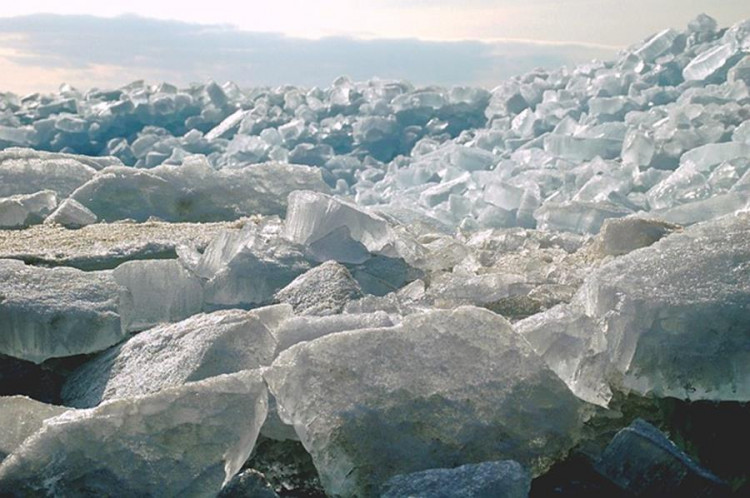Pine Island glacier's ice shelf has shed around a fifth of its mass in three dramatic collapses between 2017 and 2020. The ice shelf that is helping to keep intact one of the fastest-moving glaciers in Antarctica has thinned, The Washington Post said Saturday.
Satellite images show the ice shelf that blocks the glacier from caving into the sea is looking more fragile and splitting up much faster than before and spawning huge icebergs, new research shows.
According to a study by Science Advances, the crumbling ice shelf has retreated by 12 miles between 2017 and 2020.
In a separate study, researchers at the British Antarctic Survey and University of Washington say the recent acceleration as a result of the shelf's weakening edge could shorten the timeline for Pine Island glacier's eventual collapse into the sea.
"We may not have the luxury of waiting for slow changes on Pine Island; things could actually go much quicker than expected," The Associated Press quoted lead author Ian Joughin, University of Washington glaciologist, as saying.
Pine Island Glacier contains around 180 trillion tons of ice. It is already responsible for much of Antarctica's contribution to sea-level rise. Its glacier's motion toward the ocean increased from 2.5 kilometers per year to 4 kilometers per year from the 1990s to 2009, according to Eurekalert.
The faster the glacier flows, the more ice is melted into the sea, raising sea levels. "That means 12% more ice from Pine Island is going into the ocean that was not there before," Joughin said.
While the loss of a massive volume of ice is part of climate change, there was no unusual extra warming in the Antarctic region that triggered this acceleration, Joughin said.
<iframe width="1280" height="720" src="https://www.youtube.com/embed/SlBYm5lWTDM" title="YouTube video player" frameborder="0" allow="accelerometer; autoplay; clipboard-write; encrypted-media; gyroscope; picture-in-picture" allowfullscreen></iframe>





